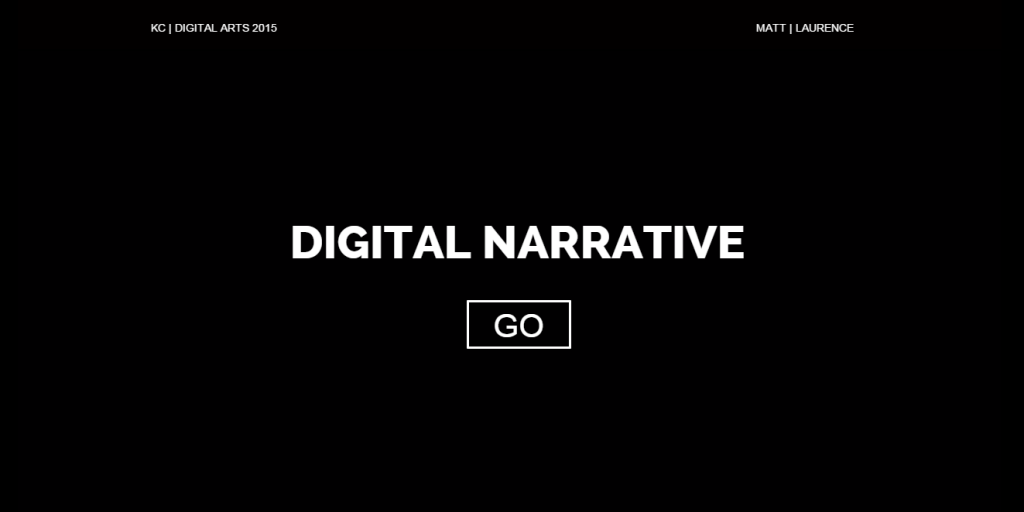[Click image to view full site] – May need to refresh site once opened as the formatting fucks up.
DIGITAL NARRATIVE – Personal, Aesthetic and Technical Development
To make my Digital Narrative, I first started with laying out the elements I needed. This meant dividing the page up, into the different sections I wanted, temporarily putting basic shapes in place. I wanted it to be in sections, like the different chapters of a book, each detailing a different part of my narrative. I set it out, so there would be one main page (that briefly detailed the main information/story of my narrative), with 4 or 5 additional pages (that go into further detail on the particular section), all similarly formatted and linked together. I then placed in a title header for each section on all the pages and briefly outlined what I wanted to talk about, writing short notes and keywords on each subject.
Once I had the basic structure I began working on the video sections, by creating them in After Effects and uploading them to YouTube. From there I could then import them, stretch them out so they filled the sections and set it to indefinitely loop. This gives a wonderful effect, as you can’t see the video frame, you are unaware its just a YouTube video.
Once those sections were created, I began replacing all of the basic shapes with relevant images so the narrative visually fitted together better and began adding some of the moving elements. Using Photoshop, I could isolate the part of an image I wanted and use the parallax animation tool to make it move dependent to the viewers mouse scroll. These moving elements would only appear on the main page and serve as the links to the other pages of my narrative (you would click them if you wanted to know more information).
Then I simply had to add the all of the text to all of the sections on each page and make sure everything was linked correctly.
An important moment from the design process of my Digital Narrative was replacing the basic shapes that divided each section, with that of powerful real world images. I feel this completely changed the look and feel of my narrative, nicely cutting up the text and actually enabled me to shorten the amount I wrote, as I felt the images told more of the story than the words could.
The addition of extra pages was also a decisive moment, as I realised my project was becoming more of an info graphic than a narrative and needed to add other elements to make it more of a story. The ability for viewers to click links and follow through to the extra pages allows some form of interaction and compliments my message of finding things out for yourself and exploring. By the viewer clicking through to these different links, they are making a conscious decision to hear more of the story and find out further details.
This in turn lead to my third important moment of development, in which I added the moving parts to the images on the main screen. This added an element of animation and movement, making the project look less like a flat website, and more of an immersive digital experience that the viewer could actually interact with.
In making my project, several times I had to draw upon previous experience or lessons/workshops that could help with the self-development of my narrative. Firstly I used what I had learnt in one of my Digital Narrative lectures, pertaining to an artist called Chris Milk and his interactive web video for an Arcade Fire song. That the idea was browser based, it completely changed the way the information came across, especially when compared to a usual music video and inspired me to create something remotely similar.
Once I had that idea in mind, I remembered back to my Pixel Based Imaging module I did last year and had a look at the style of the content I had produced for that. As that was an info graphic and my narrative was bordering on being one, the particular imagery and font types could be extrapolated and lend themselves very easily to help form my Narrative project.
Finally as my project was being built within Webydo, I could use my previous experience of the programme to help create the narrative. Having already created a series of websites for some clients at work, I was fairly proficient in building sites using the tool and as thus was not limited in the design and creation of my site.
